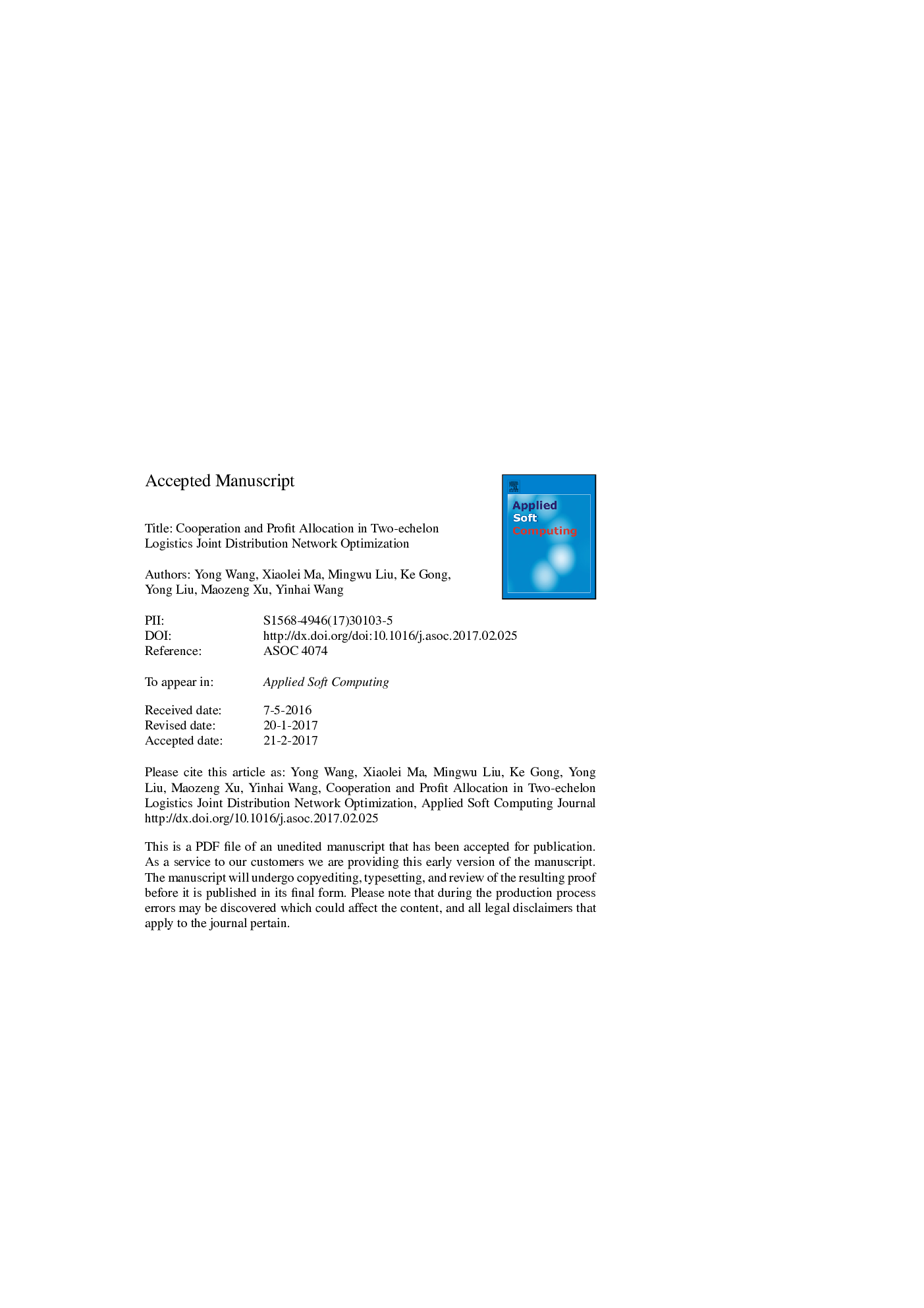| Article ID | Journal | Published Year | Pages | File Type |
|---|---|---|---|---|
| 4963261 | Applied Soft Computing | 2017 | 43 Pages |
Abstract
Collaborative two-echelon logistics joint distribution network can be organized through a negotiation process via logistics service providers or participants existing in the logistics system, which can effectively reduce the crisscross transportation phenomenon and improve the efficiency of the urban freight transportation system. This study establishes a linear optimization model to minimize the total cost of two-echelon logistics joint distribution network. An improved ant colony optimization algorithm integrated with genetic algorithm is presented to serve customer clustering units and resolve the model formulation by assigning logistics facilities. A two-dimensional colony encoding method is adopted to generate the initial ant colonies. Improved ant colony optimization combines the merits of ant colony optimization algorithm and genetic algorithm with both global and local search capabilities. Finally, an improved Shapley value model based on cooperative game theory and a cooperative mechanism strategy are presented to obtain the optimal profit allocation scheme and sequential coalitions respectively in two-echelon logistics joint distribution network. An empirical study in Guiyang City, China, reveals that the improved ant colony optimization algorithm is superior to the other three methods in terms of the total cost. The improved Shapley value model and monotonic path selection strategy are applied to calculate the best sequential coalition selection strategy. The proposed cooperation and profit allocation approaches provide an effective paradigm for logistics companies to share benefit, achieve win-win situations through the horizontal cooperation, and improve the negotiation power for logistics network optimization.
Keywords
Related Topics
Physical Sciences and Engineering
Computer Science
Computer Science Applications
Authors
Yong Wang, Xiaolei Ma, Mingwu Liu, Ke Gong, Yong Liu, Maozeng Xu, Yinhai Wang,
